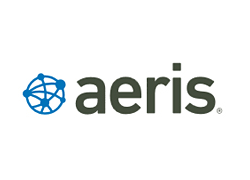For agriculturalists struggling to find new solutions for water management, today’s IoT technology may be their answer. Beyond the practical importance of responsible environmental stewardship, IoT can save farmers and ranchers money by making it easier to comply with state and federal water regulations.
Some estimates predict that farmers could reduce water consumption by up to 25% with the help of IoT technology, networks, and data collection.
Water planning for droughts
Water usage laws most consistently come into play during drought season. Using Texas as a case study, we can see how agriculturalists must work with the earth to combat water shortages. According to the Texas Department of Agriculture, Texas has more farms and ranches than any other state, with 248,000 covering 130.2 million acres. Yet much of the state suffers from prolonged drought, says Carmi Brandis of Aeris.
On May 14, 2017, the National Drought Mitigation Centre reported that topsoil moisture ─ a key indicator of soil readiness for agricultural activity ─ was rated “50% very short to short throughout Texas”. In the lower Rio Grande Valley, topsoil moisture was “100% very short to short”. This means that these farms were some of the driest in the United States and ill-equipped to grow crops or hydrate livestock.
Texas isn’t the only state going through environmental extremes, however. Farmers all around the country are facing more prolonged droughts than ever before. Large swaths of Florida and California are in a severe stage of drought according to the National Oceanic and Atmospheric Association, and much of the south and southwest is undergoing moderate drought.
Even for states with regular rain, careful usage can serve as a preventative measure. From coast-to-coast, farmers and ranchers are turning to IoT for answers.
Precise water conservation with IoT
In the past, drought management for farms meant waking up early, driving out to each irrigation site, watering hole, and water storage unit, collecting data manually, and analysing it so as to plan out management of the remaining water.
Because water use sites could be scattered across hundreds of acres, collecting water data could take the better part of a day to complete. To keep crops and animals hydrated, the task of manual water management becomes an endless cycle. Worse still, manual water management means either time away from the crops and animals or hiring an extra hand and stretching the farm’s budget to pay for it.
Today, IoT can automate much of this process. A suite of devices working together can keep an agricultural center operating at peak performance even during periods of high drought. For instance, devices that monitor cattle movement can tell how often each animal is drinking, helping ranchers better manage animal hydration needs. Likewise, devices that monitor rain barrels can help ranchers keep track of water collection. Gauges even can tell a farmer when it is time to irrigate a specific quadrant of the farm.
In Southern California, avocado farmers already are using IoT to track soil moisture levels around their trees. Avocado trees are known for requiring plenty of extra water, and IoT technology makes it possible to automate sprinkler systems that shut off when the right amount of water has been administered so no water is wasted.
Faster monitoring with networked systems
Checking IoT devices without connection to a network presents the same problem as having to manually check water levels: time is spent checking each device individually. Agriculturalists do not have time to regularly visit each device to collect data. Yet ranches and farms can cover hundreds of acres in remote areas not serviced by regular internet providers.
Custom built IoT networks that connect each remote tool to a single point are the perfect solution. An integrated network of devices creates a complete tracking system that is ideal for farmers and ranchers, making devices check-ups as simple as pulling up an app for real-time performance data.
Farmers and ranchers can choose different networks to fit different needs. For instance, cellular networks present the best option for farms that have many devices collecting large amounts of data that farmers must respond to immediately. If you’re farming 100 acres of fruit in a dry area, you may want a cellular network. But for farmers who just want the ability to receive updates on water levels once or twice a day, a low-power wide area (LPWA) network is probably the more cost-effective solution.
If you want to improve water management with IoT, but aren’t sure which network is best for you or how to get started, contact Aeris
The author of this blog is Carmi Brandis of Aeris
Comment on this article below or via Twitter: @IoTNow OR @jcIoTnow










